Leaderboard
Popular Content
Showing content with the highest reputation on 03/25/2018 in all areas
-
Hi Folks Hope everyone is well out there. I was using the Equinox the other day at lunch time and working my way through a mess of bottle caps. This is one of those places that has been detected over and over again for years (local hotspot for detectorists). In fact as I was detecting a guy stopped his car and said to me "Don't waste your time, we have been over this field a thousand times" ( or something like that, I was taking my headphones off when he first started talking). If he hadn't of said that I probably wouldn't have shown him what I found. But, it was too tempting. Ha, maybe that was his logic all along. His eyes bugged out when I showed him the coins. Anyway we had a good talk, and know mutual other Detectorists. Nice guy. The coins rang in real nice around 27 and were about eight inches deep. I was running park 2 with high sensitivity. Recovery speed was at 6 and Iron Bias at 2. I am seeing screw caps coming in as high as 24 even a couple iffy 25s. The coins I have been digging have been above that so far (besides a buffalo nickel at another older less trashy site). Update I found a Barber dime at that park yesterday which rang up 25. That is the same ID as some of those bottle caps. So I will be digging those deeper 25s for sure.. HH8 points
-
Mr Lighthouse I am 73 yrs old and believe me I wish I was 46 but if you don't drop to your knees to dig an iffy target you won't find the gold, silver or clad. Yesterday I dug 31 coins in less than an hour and that means I dropped to my knees 31 times in less than an hour. I hit a honey hole I am heading to at daybreak because I want to be gone before others see me there and start hunting it as well. Stay with the factory pre sets until you know your detector well enough to see the effects of changing from pre sets to a setting that may work well for others. You must also understand not all soil conditions are not the same and what works for Joe in Montana may not work for Bob in TN. Read the posts and watch the U-tube videos and often times you will find the guy on U-tube isn't very good. Just because someone does a U-tube video don't mean he is an expert. Learn techniques from them or learn what not to do as well. You need at least 100 hours on your machine as a newbie to understand the slight blips and the different tones so you know what's worth digging and even then you will dig a lot of tabs, bottle caps and cans. You learn by experience. Any old timer will tell you if you don't dig it you won't find it. After you get 100 hours on your machine changing settings will become 2nd nature and you will know what works and what don't. If you are only going to use your Equinox occasionally I would never change anything except sensitivity and tones. You never completely hunt a park or beach out. Whether you use the same detector over and over or different detectors you will always find something. Friday morning I was hunting a practice athletic field that was the main field for the school 12 yrs ago and before and I found a nickel in an area I have went over no less than 5 times with my E-Trac and 3 times with the Equinox. I thought the park was hunted out with the E-Trac and I have since found over $25 in clad with the Equinox. I took the Equinox there on my 1st hunt with it and in 45 mins found $1.46 I have had 6 detectors and the Equinox is probably easier to learn than any of them and by far the best out of the box. I had a V3i and I never really did conquer it. I found what worked for me after many hours of beating hunted out parks. I had an AT Pro that I felt I was as good as anyone can with it. I found over $2500 in clad in less than 2 years with it. One final thought. The only magic setting that works for everyone is the factory pre settings. When a man as knowledgeable as Steve says it's pretty good out of the box take his advice and run with it. I know it's a long reply but it's 5:30 am here and I am waiting for daylight to head out to my honey hole.7 points
-
Hey Guys, Being a dealer here in the US for many moons, I have seen many mods come from Australia used on US ground. I can personally say I seen some friends use Ismael's mods on some of the early SD and GP's and they got great results. Over the years, Ismael used to contribute to many online forums, including mine back in the early days. As far as Woody, his mods look fancy and some swear by them. I have also heard otherwise. I'm sure there are ways to mod Minelab's and get better performance on some locations and certain types of gold without having to upgrade every couple 2-3 years to get the latest and greatest. I personally never used mods, just believed in learning the detector well, pay close attention for faint targets and prospect for new ground.5 points
-
Hey Sourdoughmoe, Glad you kept the NF 8x6, it will be useful in the future for bedrock hunting and working around a lot of rocks, brush and such. It's one of the best clean up coils after working the area with a "prospecting sized coil" like the 14x9 you got. My favorite all around coil for detecting is and was the 14x9 elliptical Mono. If I located a good areas with nuggets, I would work it pretty hard with this coil and then come back at a later time with a larger coil like a 17x13 or bigger round in hopes of larger pieces at depth. At some point I would return with a small coil or a high end VLF for the dinks. I would also recommend doing testing outside, away from the house EMI. Thanks once again for your business and friendship. Wishing you much success with the new toys!5 points
-
I was was on my iPhone and realized that my wireless headphones were still paired Up.. They pair up to my phone as well as my Equinox every time I turn them on.. I had accidentally left them on after I had been doing some testing in the house earlier.. I have seen the little headphone paired icon on my phone before but this time I noticed a little battery indicator next to the icon.. Not sure how accurate it is but it was nice to see.. Not knowing how full my headphones were always kind of bugged me.. We will see with time how accurate this little indicator is.. Bryan4 points
-
I checked my wife's 2 diamond platinum rings. 1 was a 10, and the other a 12, in air testing. She wouldn't let me bury them.4 points
-
sorry Lighthouse; I was paraphrasing MR Clinton....sort of... However, what Steve said is what I really meant...no one ever gets everything, there are too many variables and square feets... fred4 points
-
All the Gold Modes behave differently to each other on targets, this is due to the 2 channels having cross over points where the target response is a blend of High/Low and Low/High all at the same time. This "confused" type signal can make the audio sound muted compared to a dedicated one way signal in another mode, tricking the operator into thinking the target was louder in one mode over another. This is why it pays to go over patches in a range of modes to allow for each mode to respond best on any targets that were not so obvious in the mode used previously. The GPZ has a larger "range" of information available compared to previous PI machines, call it resolution if you like, which means each and every target is more individual in the way ZVT responds. JP4 points
-
You can watch the whole video or skip to the 8 minute mark for the comparison.3 points
-
A reference collection of threads about the Minelab Equinox, grouped into rough categories. Minelab Equinox 600 Data & User Reviews Minelab Equinox 800 Data & User Reviews Minelab Equinox Software Update 1.7.5 Released Minelab Equinox Software Update 2.1.12 Released Equinox 600 / 800 Full Instruction Manual (English pdf 5.59 MB) Equinox 600 / 800 Getting Started Guide (English pdf 847.71 KB) Equinox Battery Charging Recommendations And Warnings Minelab Equinox Parts & Accessories Page Some Equinox Videos Done By Purchasers Can I Be Critical Of The Equinox Here? Equinox 600 Versus Equinox 800 Minelab E-trac, CTX 3030, Excalibur Versus Equinox Minelab Multi-IQ Technology Explained Selectable Frequency And Multiple Frequency Tips For Getting Started Equinox and Electrical Interference (EMI) Short Bursts Of Intense Static Or Interference More Tips For Getting Started Even More Getting Started Tips Latest Tips For Getting Started And Yet Another Getting Started Tip Loose Rods, Wobbly Rods, Rod Flex Important Tip - Global Vs Local Settings Minelab Equinox Factory Presets Minelab Equinox Tones & Advanced Tone Options Video - Adjusting Zones, Tones, & Tone Volumes On Equinox External Speaker Not Turning Off When I Plug In Wired Headphones Headphones That Work With Nearly All Detectors Equinox Recovery ( Detect Speed ) Settings Recovery Speed & Target Masking Recovery Speed & The Conveyor Belt Ground Balancing The Minelab Equinox Equinox High Mineral Tips If The Audio Is Open Gate Or The Snap Shot Type ? Iron Bias - What It Is Why Only 50 Points Of Target ID Resolution? Nickels Versus Tabs Bottlecaps & Equinox Target ID Normalization Some Minelab Equinox VDI Numbers Another Equinox Target ID Chart Target ID Numbers Can Vary With Search Profile & Frequency More reference links below the ad..... ads by Amazon... UK Target ID Numbers Canadian Target ID Numbers Australian Target ID Numbers U.S. Gold Coin Target ID Numbers Jewelry Target ID Numbers & Tones How Metal Detector Discrimination Works Iron Falsing A New Way To Do 50 Tone Audio Is Park 2 The Magic Mode?? Park 2 Compared To Field 1 Or Field 2? Park 1 & Field 1 versus Park 2 & Field 2 Multi-IQ Frequency Weighting Differences Between Park & Field Modes Number Of Saved Profile Slots For Custom Settings User Profile Button Gold Nugget Detecting Tips More Tips On Nugget Detecting With Equinox More Equinox Gold Prospecting Tips So What Is Gold Mode Exactly? Equinox First Gold Nugget Photos My First Equinox Gold Nuggets Equinox, Micro Nuggets Target ID Numbers For Gold Nuggets & Gold Jewelry Complete Set Of Equinox Physical Measurements Remove Or Reposition Equinox Handle & Pod Assembly? Waterproof Connections & Audio Jack Sizes Equinox, Lithium Batteries, & Air Travel Equinox Battery Life Test Minelab ML80 Wireless Headphones Check ML80 Battery Level Equinox Future Firmware Updates Minelab Discount For U.S. Military 2018 - Year Of The Equinox! Minelab Equinox - The Best All Around Detector I Have Ever Used! The Simple Reason Why Equinox Is Special The Video I Have Most Enjoyed So Far - What Makes Equinox Special I Saw In A Video Where Equinox Got Beat By.... Early Minelab Testers Question?? Equinox 800 - My Take, Commentary, And Testing Is The Equinox A Deep Seeking Machine?? Gold Coin Found With Equinox2 points
-
2 points
-
GOLD COIN ALERT. A HAND FULL of $5 US Gold Coins found today. Not only has he been a friend of our family for many years, my dad got him involved into metal detecting 20+ years ago and today was the PAY DAY. 1st his daughter digs a 1905-S $5, but then they dig 8 more. Congratulations to you both. Gold nuggets come in many ways and they will remember this day forever.2 points
-
Hey Sourdoughmoe, Per our text message conversations, I believe depth is so over rated. There are so many variables when it comes to depth, it's very hard to answer a question like - "How deep will my GPX 5000 go on a 1 gram gold nugget?" However, this is what people expect is an easy answer to say, for sure it's 6 inches. First, without me seeing the test in person, we don't know how it's performed for starters. The customer could be running the coil 2 inches off the ground, while another customer is scrubbing the ground. One customer might be using high end headphones, while another is using an external speaker or el-cheapo's from Wal-Mart. We have no clue what their thershold is, one could be running NO threshold, while another is running their threshold like it's the volume of the detector, full out. Then you have ground mineralization, characteristic of the gold nugget being tested, settings, timings, coil size, coil type ....... As you can see, there are hundreds of combinations how someone might be performing a test to say you may or may not find a 1 Gram at 6 inches. Hope you understand, it's a complex question.2 points
-
Ive began experimenting with mobile phone sound analysis myself. There's no shortage of apps for this and it's going to be an interesting experiment2 points
-
yaht... I'm starting to understand that. I guess I'll have to wait for the visual tech to improve before I get what I ultimately want, which is x-ray vision. ;) Being a musician as well, I think my ear will eventually start to tune into to the tones that will best protect my knees and lower back. I know there is going to be a discrimination learning curve, but I have yet to master the learning curve of my insatiable curiosity. Though I'm looking for the "magic bullet" technique as it were, it looks like I'm probably going to just have to dig EVERYTHING starting out. GRRRRR... Yeah... that's what I suspected. OK... So thank's all for your input. I guess I was looking for the ideal formula to nail gold and silver jewelry, avoiding as much physical pain, and expending the least amount of energy as possible. Which is why I'm choosing soft beach sand to start out in the first place. Not that I'm unhealthy or anything, just trying to work smart, not hard is all. It looks like I'm just gonna have to dig, and dig some more no matter what tones I'm hitting. It'll be a funny sight I'm sure, those first few times out. I'll be the guy on the beach surrounded by 75 holes in a 15' x 15' area, having nothing to show for it but a pile of heavily rusted Matchbox cars, broken sunglass hinges, and swimsuit eyelets.2 points
-
If you're truly a newbie then stay in one of the parameters already set up for you. I'm anything but a newbie but when in the dirt I have stayed in park2 the entire time and have upped the reactivity(recovery) to 7 from 6. That's it. As for getting it all, you won't that is unless you investigate every inch of ground from every direction and how you control your coil will determine what you find. Your ear needs to be attached to your wrist in that it will dictate where you swing again to check signals. GB is right that in the time you have do some bench testing not for depth but for sound. You have to learn the sounds, over and over again. If you're looking for low conductors figure out a sound that resonates well with you so that when you swing and you get a target between 3-12 your sound is one that will stand out to you. To many folks run the sounds with little or know difference between them and they start to melt into one another. Maybe go with 2 tones, a low for 3-13 and disc out 14-19 and run a high tone for 20-35. Above all have fun. You're going to get fooled a lot but every dig is a lesson.2 points
-
Why not open the box, assemble the unit, charge it up, put it on a non-metal table (or chair) away from metal (including away from metal in the table), turn it on, do an auto frequency adjust (to minimize EMI, I think they may call this 'noise cancel') and play around with some test targets in Park 1? Yes, it's better to be outside, but you can familiarize yourself with the controls, tones, etc. inside while you await real spring weather. Either have a computer or smartphone with the manual open or (my preference) print out the manual. After getting familiar with the operation mode (I'd stick to Park 1 until you've had some hunts under your belt), charge the headphones and sync them up to the control unit. It actually is easier to do the synching inside where it's not too bright to see the LED's on the headset. (I learned that the hard way.) It's a tough unit; you're not going to hurt it.2 points
-
Yes, the Horseshoe button is the same discriminate mode you are hunting in already. The only change when you push the button is all items are set to accept. Each item is still being discriminated (filtered) but is told that anything going through the filter is a good target. A true all metal mode has no discrimination filter in the first place. Most gold nugget detector primary hunt modes are true unfiltered all metal modes. Gold Mode is a simulated all metal mode in that it features VCO audio, a common feature in all metal modes, but you can still discriminate items, so obviously targets are passing through the discrimination filter. The assumption is a true all metal mode is more powerful than a disc mode set to accept all items. I will be the first to question if that is true with Equinox. It’s disc modes are more powerful than most detectors unfiltered all metal modes. All metal notes Mixed Mode2 points
-
A common misperception among those new to metal detecting is that metal detectors can identify one metal from another. How much we wish that were true. The reality is that for all practical purposes the common metal detector target id scale is based on a combination of the conductive or ferrous properties of the item multiplied by the size and shape of the item. There are two common terms in use for this scale. The Target ID or TID scale is the most generic. White's also popularized the use of Visual Discrimination Indicator or VDI numbers. You will see references to both TID and VDI numbers and both refer to the same thing. The problem when you use Google is that TID also refers to Terminal ID number, which is for credit card machines. VDI gets far better results as the preferred term and so is what I will use from now on. The VDI scale is almost always arranged the same way by common convention although in theory it can be rearranged any way you want. The common scale has ferrous items on the low end and non-ferrous items on the high end. Ferrous items are like mirror images of non-ferrous items and so the most common arrangement of the VDI scale is with small items in the middle with ferrous getting larger in one direction and non-ferrous getting larger in the other direction. The ferrous and non-ferrous ranges actually overlap in the middle. Large Non-Ferrous Medium Non-Ferrous Small Non-Ferrous Tiny Ferrous/Non-Ferrous Overlap Small Ferrous Medium Ferrous Large Ferrous We can assign a numeric range to this basic VDI scale any way we want. Many early machines went with a 0 - 100 scale, with the ferrous compressed into the low end of the scale: 100 Large Non-Ferrous 50 Medium Non-Ferrous 20 Small Non-Ferrous 5 Tiny Ferrous/Non-Ferrous Overlap 3 Small Ferrous 1 Medium Ferrous 0 Large Ferrous The idea of ferrous as negative numbers made sense due to the mirror imaging in size between ferrous and non-ferrous. A very common White's scale runs from -95 to 0 to +95 95 Large Non-Ferrous 50 Medium Non-Ferrous 15 Small Non-Ferrous 0 Tiny Ferrous/Non-Ferrous Overlap -15 Small Ferrous - 20 Medium Ferrous - 40 Large Ferrous The "positive only" 0 - 100 VDI scale seems most popular these days with other manufacturers, but the scheme varies. Two very common setups are 0-40 ferrous and 41-99 non-ferrous OR 0-10 ferrous and 11-99 non-ferrous. But as I noted you can set this up any way you want and so other scales do exist. When we look at just the non-ferrous part of the scale, what is important is how the detector "sees" the target. In very simple terms conductive targets are either very weak or very strong or somewhere in between. Small items are weak targets. Low conductive metals are weak targets. Large items are strong targets. High conductive metals are strong targets. The shape matters. Irregular shapes or thin items are weak targets. Rounded and thick items are strong targets. On a conductive scale of 0 to 100: 0 = very small targets 100 = very large targets 0 = very thin targets 100 = very thick targets 0 = very low conductive metals 100 = very high conductive metals 0 = very irregular shaped targets 100 = very rounded targets, especially is a hole in the middle Add this all up and small gold items are low on the VDI scale and large gold items high on the scale. Silver being a better conductor than gold, a silver item will read higher on the scale than the identical size and shape gold item. In general silver will read higher than gold. However, a very large gold item can read higher than a very small silver item. Chasing thin hammered silver coins in the U.K., especially the cut varieties, is not that different than hunting gold nuggets. What you rapidly figure out is the metal detector VDI scale can only get repeatable results on certain man made items that are the same every time, like a U.S. nickel or a U.S. dime. And even these signals degrade when deep in the ground or in proximity to other items under the search coil at the same time. Given all the limitations, it is a wonder we get any degree of accuracy at all with detector discrimination systems. With that, I give you a standardized White's VDI scale taken directly from the control box of my White's DFX. This -95 to 0 to +95 scale is common on many modern White's detectors. Nearly all other detectors have the same relative positioning of items just with different numeric scales, an exception of note being the Fisher CZ detectors, which use a rearranged scale. This DFX scale is helpful because it includes gold coins. The main thing I want you to focus on here is the relative positioning of items on the scale. As a detectorist operating in the United States, I always pay attention to just three things 1. where do the ferrous numbers start? 2. where does a U.S. nickel read? and 3. where does a U.S. dime read? If I know those three things, I can adjust almost instantly to any detector scale in existence, because I know how everything else reads in relation to those three points on the scale. Standard White's VDI scale Looking at the scale you can use gold coins as a rough guide to where large gold nuggets will read, although coins being pure gold and round will read much better than gold nuggets of the same size. It might take a one pound gold nugget to read the same as a one ounce $20 gold coin, which in turn reads very close to the U.S. silver quarter reading. On the other end, tiny gold, tiny ferrous, and salt water, being a low conductive target, all overlap. This is why if you tune out salt water on the beach, you also tune out single post gold ear rings and thin gold chains, which read like small gold nuggets. If a prospector tunes out salt alkali readings on a salt lake, there go the small gold readings. And the chart shows that if you get too aggressive in rejecting all ferrous items, good items can be lost also. When I say small it is important to note what we are really talking about is small/weak readings. A large gold item buried very deep in mineralized ground will have a very weak reading and appear as a small target to the detector. This means a very deep large items can appear just like a very small gold item and be lost for the very same reasons as those small items. Again, think weak targets and strong targets to get a better feel for how things react in the field. To sum up, gold and platinum are low conductive metals, and when also small in size read very low on the VDI scale, even dipping into the ferrous range. The foil range is the sweet spot for ear rings, thin gold chains, small womens rings, and platinum items. In general women's gold rings will read below a U.S. nickel and men's gold rings will fall above a U.S. nickel on the VDI scale. Nearly all gold nuggets found by most people are going to read nickel and lower just because nearly all gold nuggets are small. However, as this photo I made using my DFX and some gold nuggets shows, gold nuggets can read all over the place due to their shape and purity. Surprisingly, if you add silver to gold the conductivity drops as alloys are less conductive than pure metals. This makes many gold jewelry items and gold nuggets far harder to detect than would be the case were they pure gold. See this article for details on this nugget photo Some Gold Nugget VDI Numbers Target id numbers for naturally occurring gold nuggets You can get some great spreadsheets for jewelry VDI numbers for White's and Minelab detectors here. There are no doubt many people who have read this who are just shaking their head and thinking "this is why I just dig everything". I absolutely agree, when at all possible, that is the best solution. Unfortunately it simply is not possible in some locations where trash targets outnumber the good by thousands to one. This is where knowing the VDI scale and how it works can pay off. The best book ever written on the subject of discrimination is "Taking A Closer Look At Metal Detector Discrimination" by Robert C. Brockett. It is out of print but if you find a copy grab it, assuming the topic interests you.1 point
-
I've only had my 800 for about a week, so I made some simple ID cards using Steve's graphic, to get familiar with the machine. I have extras, and with Steve's permission, I'm offering 1 to the first 50 interested. These are simple, pocket size, laminated cards, with large bold font. Target IDs on the front, detector settings menu on the back. Edit 2/19/19 by Steve Herschbach. The offer to mail you one of these free is long past. Just download the pdf, print, and laminate your own. idcardfinal.pdf1 point
-
1 point
-
That's the melt value (ignoring processing costs). Similar to nuggets, the collector value even for a common date US gold coin is higher, and of course if it's a rare date+mintmark then much higher. Any way you slice it, a once in a lifetime find.1 point
-
Up until 1970's the price of gold was locked to the dollar, so, yes, $5 gold coin had $5 of gold in it when minted. Prior to 1934 the fixed price was $20.67 per tr.oz and starting then until 1975 it was $35.00. According to my Red Book, beginning in 1839 and going all the way until early 1930's when gold was no longer minted into US coins, the $5 piece had a mass of 8.359 g and a composition of 90-10 gold-copper by weight.1 point
-
I'm guessing the Equinox is calibrated to quarter sized coins, in neutral soil by what it says in the manual. The arrows on the Equinox scale = 2" (approximately) for each arrow. I started counting the arrows on the depth gauge as 1" for targets falling in the penny/dime ID range. This seems to be effective so far, and more accurate in my highly mineralized soil. I'm still very new to this machine and learning everyday.1 point
-
I'm in shape, and I have never run from the work of a worthy task, as it's the heart of my life's success. However, the joy of work for me has ALWAYS been finding and sussing out a "better way", which is to say "working smart, not hard". When I find that way, I CANNOT WAIT to share it. I'm actually more excited to share those better ways, than my finds, yet I'm excited to share my finds as well. Thanks for your feedback, and my apologies for leaving the impression that I'm trying to avoid hard work.1 point
-
Get a beach scoop and there will be no knee dropping. If you want to find gold rings your gonna want to dig those 9-12’s and much lower as most gold will fall in the foil range. Big gold can sound off in the zinc penny range. Gold is the hardest to find of all but on the beach at least the digging is much easier. The best thing to do is get to know the machine and stick with the standard settings for the environment you are hunting in. Do this for the first 50-100 hours and when you feel comfortable then try tweaking things around. I’ve had my CTX for 4 years now and I’m still learning the machine. The reality is you will like some settings that work and most likely hunt with those most of thee time. Good luck and post anything cool you find. strick1 point
-
Man my 14x9evo is as good as the sadie on my small pieces and better than the 15x12 I can hear a penny through 13 inches of memory foam1 point
-
I wish metal detecting worked that way. It’s easier if you accept you will never walk away from any place knowing all the good targets are gone. There are no magic settings that recover all the good stuff unless you are wanting to maybe try recovering every single metal item on the beach. The reality is you are going to probably use some level of discrimination, and discrimination is more a judgement call sort of thing than a certainty. But for saltwater beaches basically it boils down Beach 1 for anything not actually sopping wet, and Beach 2 for in the water. Freshwater beaches you can use any mode since freshwater is more or less invisible to the detector. So on freshwater beaches or bone dry portions of saltwater beaches you can experiment with the Park, Field, and Gold Modes if you wish. That could offer an edge on micro jewelry like single post ear rings or fine chains.1 point
-
1 point
-
1 point
-
I am a coin shooter but this thing amazing. I have had this thing since the 14th of March and 13 hours on it. The pile of coins on the left are from heavily hunted parks using my E-Trac from Jan 2, till March 13th and the pile on the right is a new park with the Equinox 800 in 13 hours. There is over $20 in clad quarters and I never counted the dimes or pennies.1 point
-
Still a big Toyota Cruiser fan but I have to say as a dedicated detecting vehicle my Perentie runs rings around my cruisers. Economy wise I'm not sure of the figures but I know when I picked it up I drove about 4200 klms home and fuel cost was around $450.00au For those that don't know a Perentie is basically a Landrover 110 but built in Australia for the Australian Millitary. Alluminium body with a galvanized chassis and a 3.9 Isuzu diesil truck motor. Fulltime 4x4 with low range plus front and rear lockers.1 point
-
my carbon tuning equinox: The 90 cm carbon tube comes in and out of the backrest, I slightly modified - i Know the heigt -2mm less fixed point of the equinox handle... - plus the weight of the weight is even -80gram less on the coil side. Relicmeister - combining with your pocket lock would be perfect.1 point
-
I would highly recommend Doc’s Gold Screamer Power Pack, Li-Ion Battery System for Minelab PI’s, Although they are pricey, its worth it. https://www.robsdetectors.com/docs-gold-screamer-power-pack/1 point
-
1 point
-
Sounds like you have one heck of a scoop on the way to your house Steven. You're right, they are really great people to work with and they make top quality products. Shipping is fast too! If tiny items do become troublesome, you can always zip-tie a small piece of hardware cloth to the bottom of the scoop.1 point
-
Equinox can use 1-4 wireles audio ouputs at once,-in 50 tone, so it will not be a problem to use some spectral sound analyzer in a mobile phone ... even though a good sound signal is being heard ... and then VDI...1 point
-
1 point
-
Charts are usually constructed using simple air tests. The big caveat on all discrimination systems is that ground effects and nearby targets can cause target id numbers to read both lower and higher, so all this really only works on relatively isolated targets in mild ground. It all goes out the window for anything more complex, and in places like Europe with thousands of years of history with different types of finds to be made, you simply dig all non-ferrous targets. Therefore constructing charts they are only for reference under perfect conditions, and they must be able to be duplicated by others. Air test with moderate sensitivity a few inches from the coil. You want clean, solid repeatable numbers. Trying to go farther will just give you erratic numbers that bounce all over the place.1 point
-
Thank you, Steve Herschbach, for this scholarly dissertation... THIS is why I bow towards Reno each time I turn on my detectors! ~LARGO~1 point
-
I guess this is why I like the machine I use because when changing to a larger coil and having to work slower adds depth and having the Delay/Recovery preset at the right speed in the first place, the beauty of the XP and V3i is you can pick the optimal setting for the task in hand, I have avoided the V3i because I want to detect not program but seeing the terminology change again was all I needed to drive me away and I don't want to give up that hot prospecting mode and lightning Tracking speed. It was a milestone back then and it is still the benchmark now. I would have been happy if Whites had just stuffed the MXT in to the MXS housing, It would be interesting to see/compare the first version of the MXS and this newer update and if there was one in between just to see which version would be the most flexible, It would be good if Whites Techs could look in to that, we know that the slower version does not make use of it's full potential and the update hopefully will be a rocket ship and with a bit of luck the recovery speed will match the mode you are using,1 point


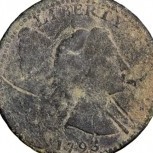

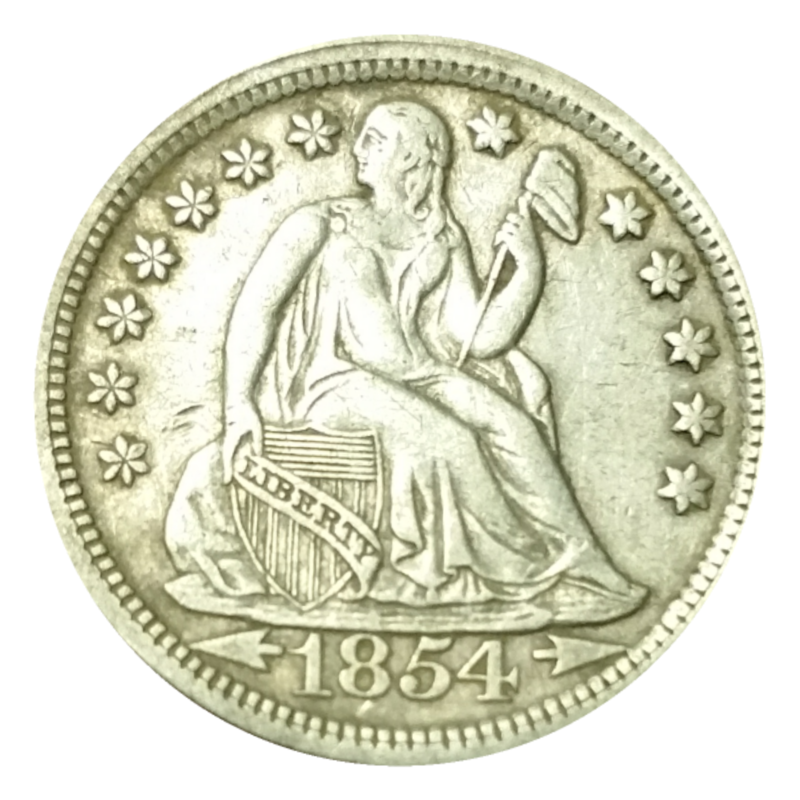
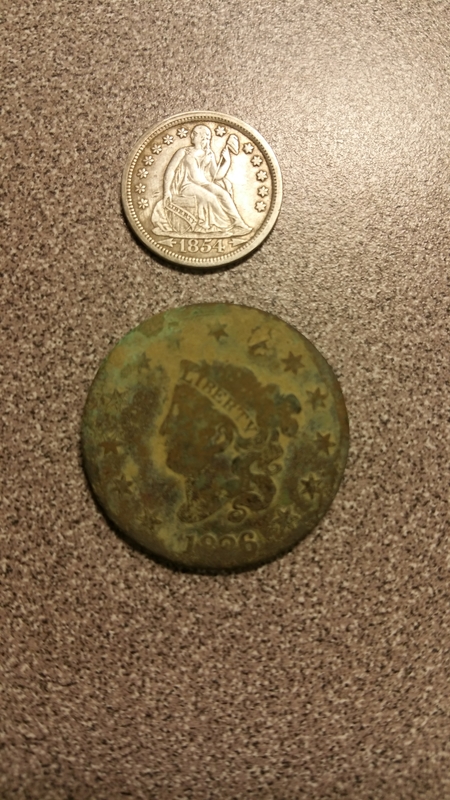
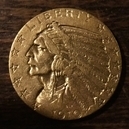
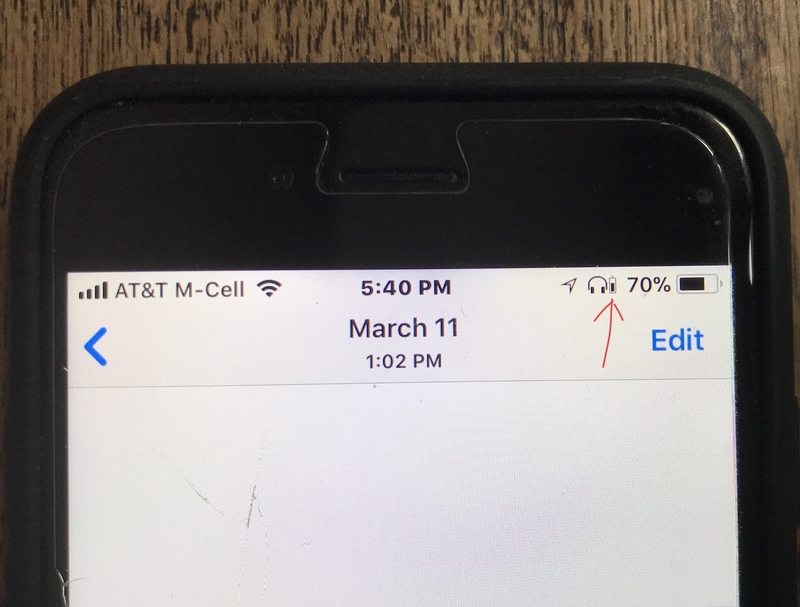


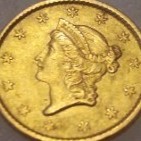
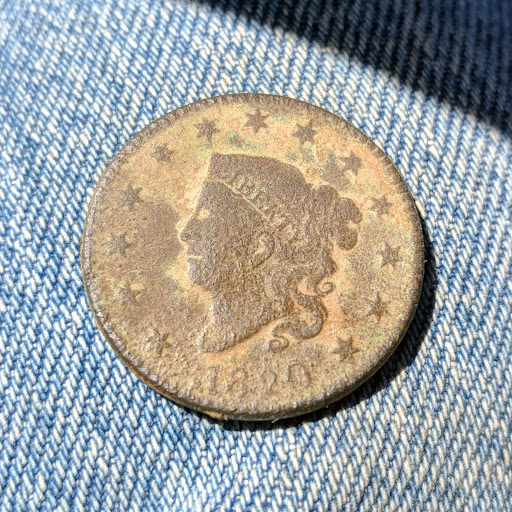





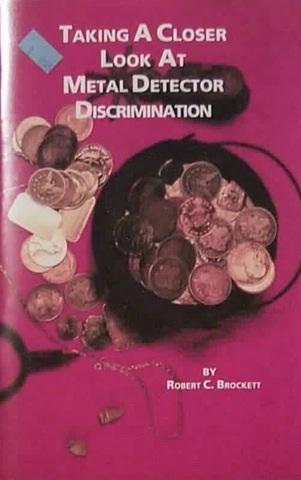
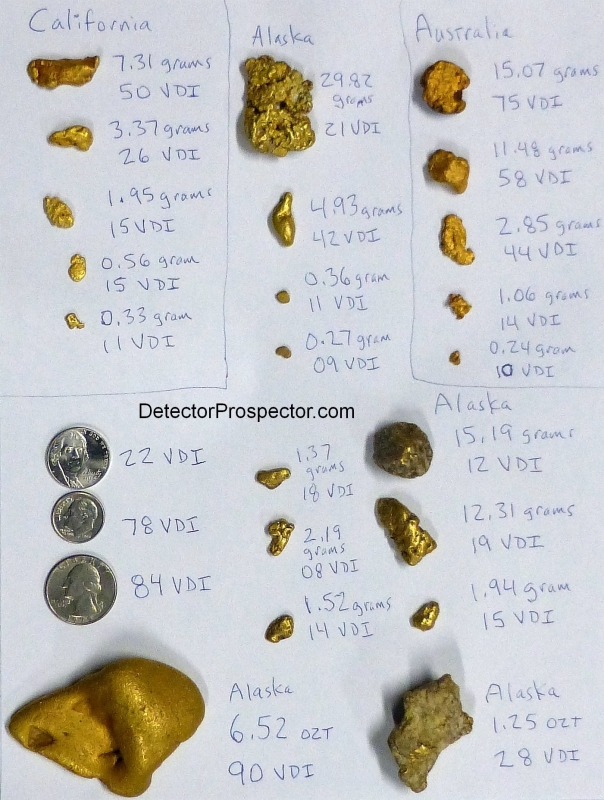
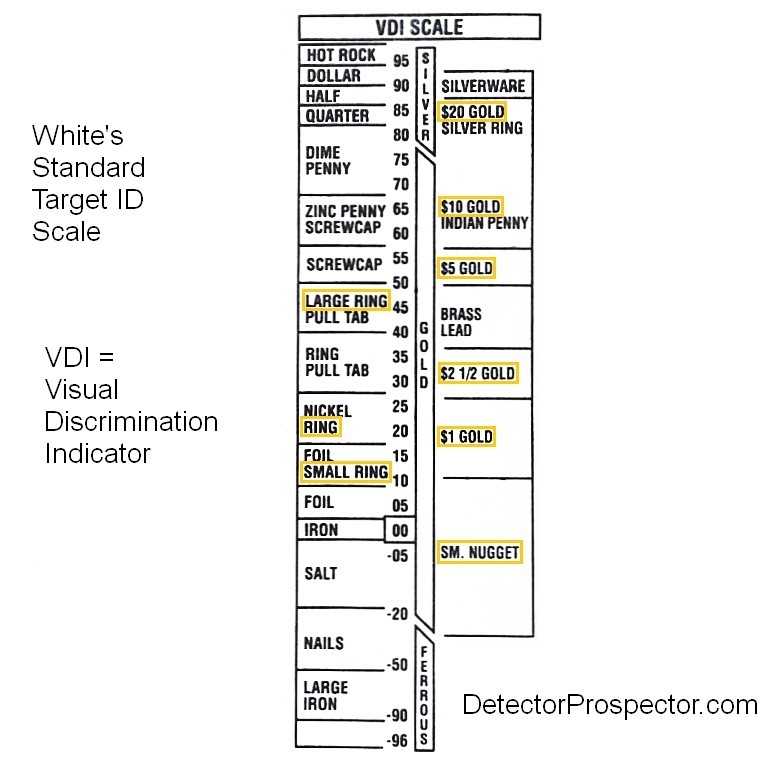

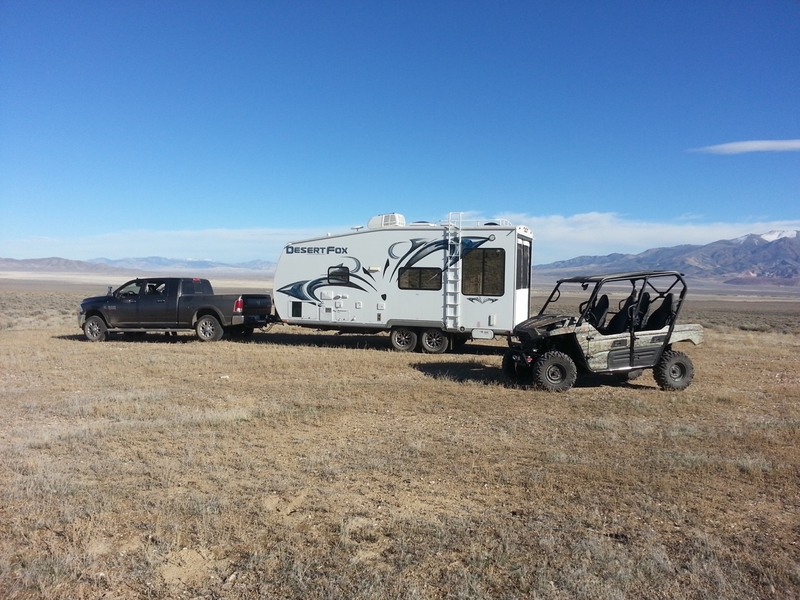
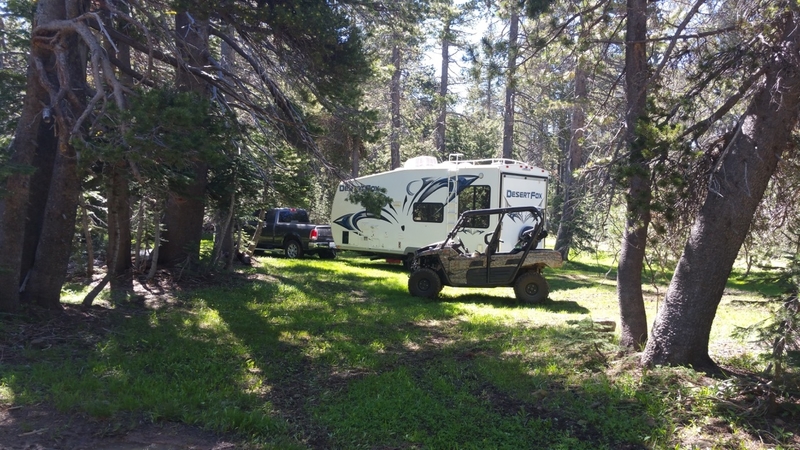

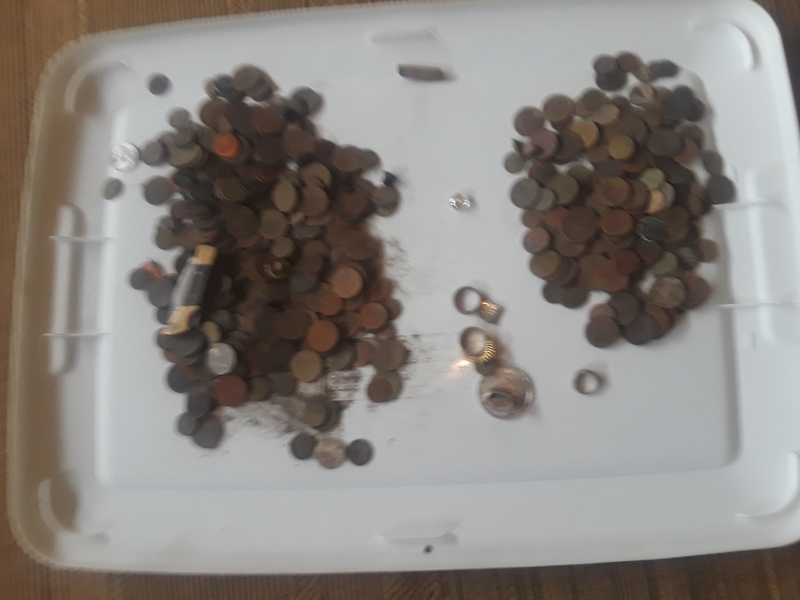
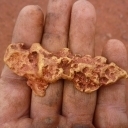

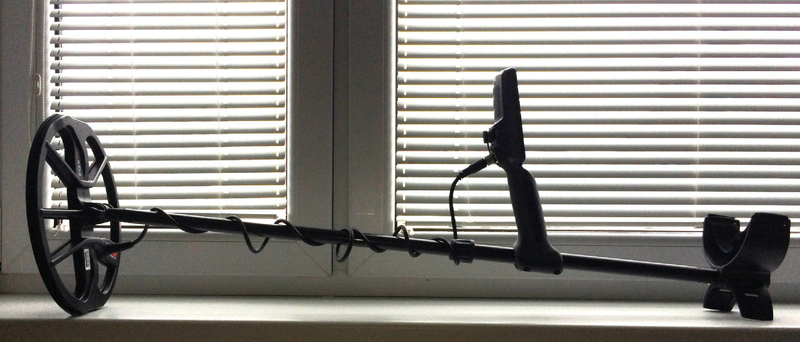
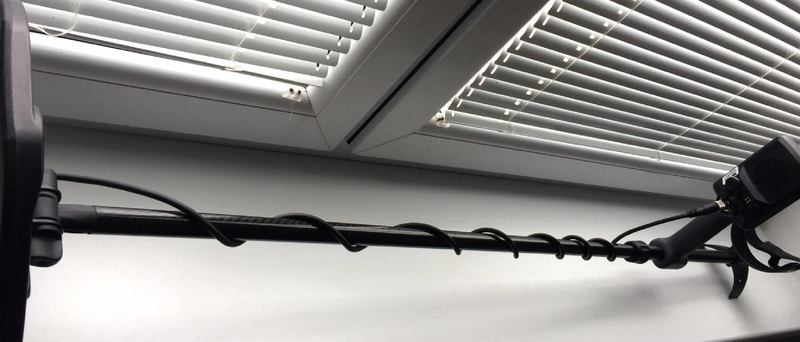
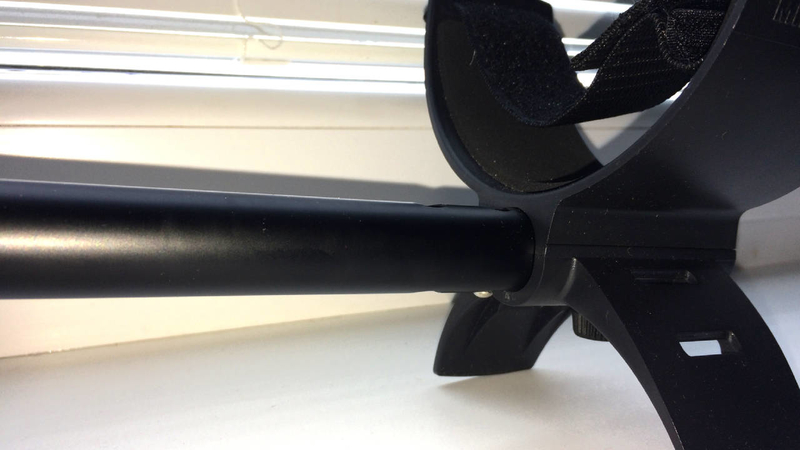

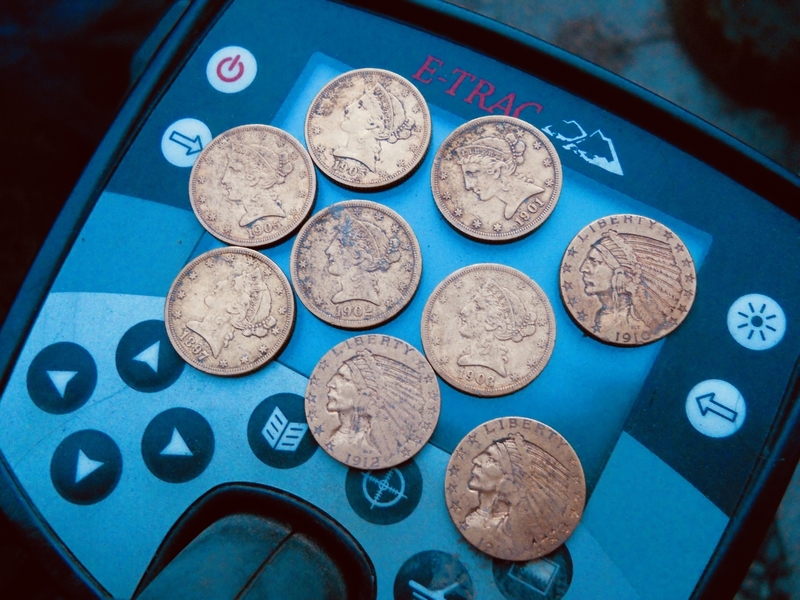
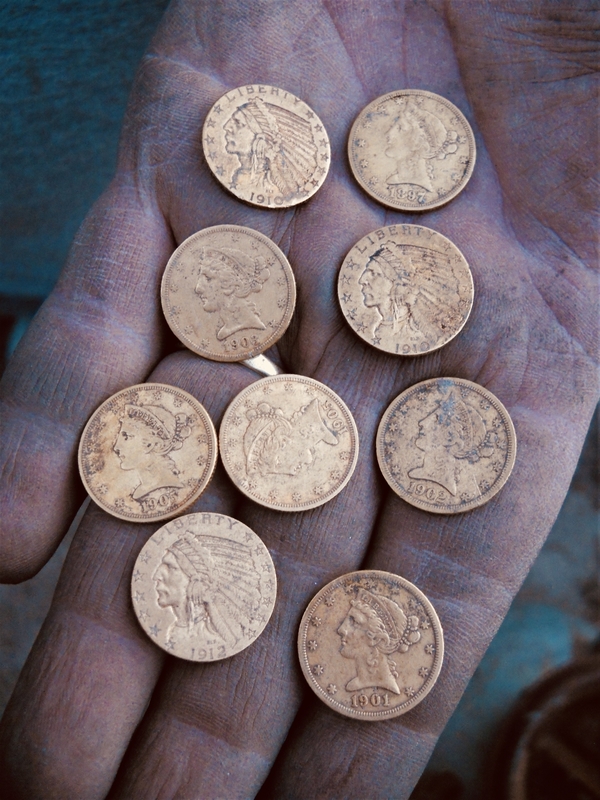
.jpg.d36fcd52325fe8a6a366d3944c8806e4.thumb.jpg.7439025c7a6d125b76c4d4495030cde4.jpg)

